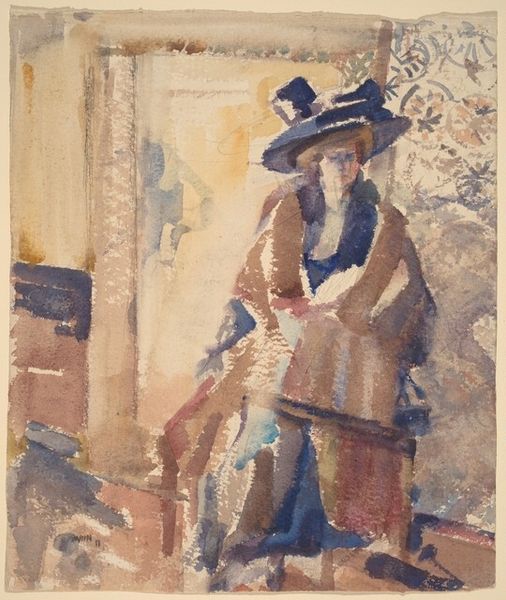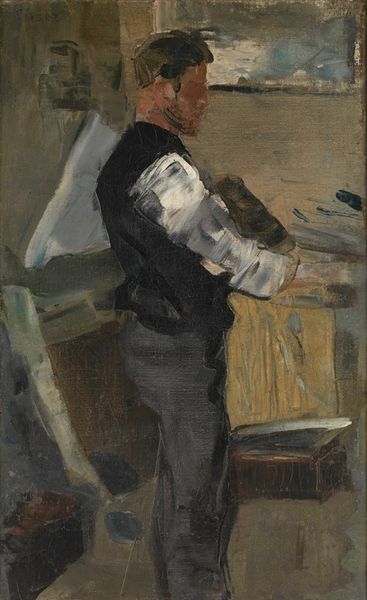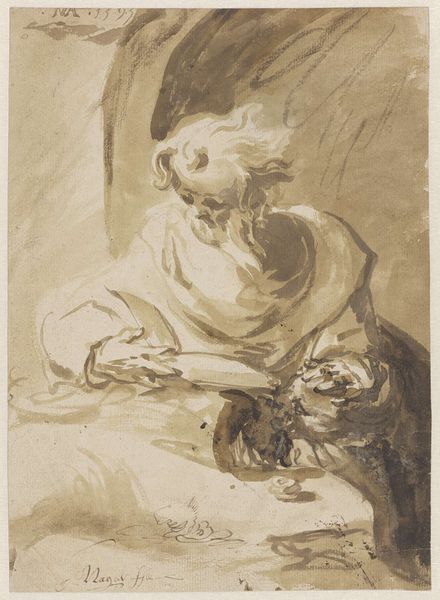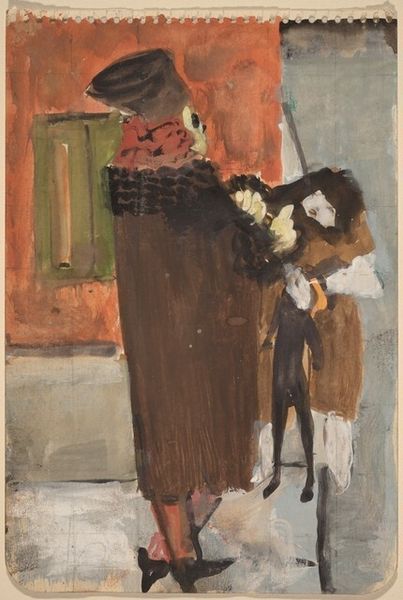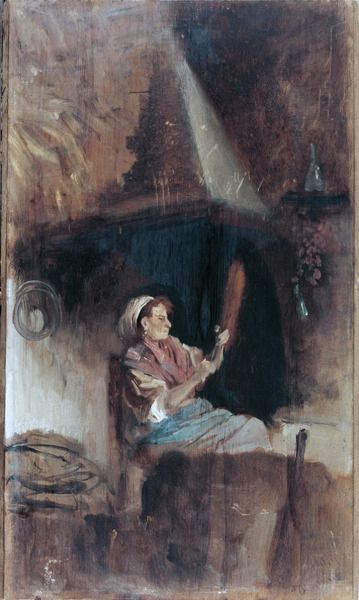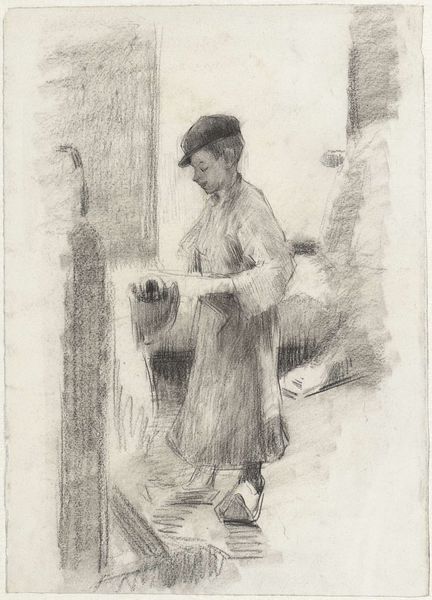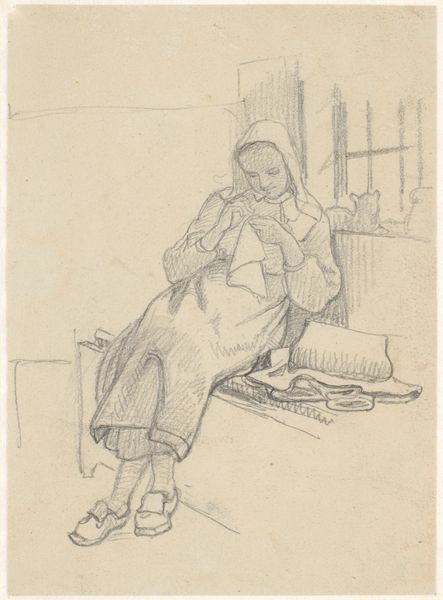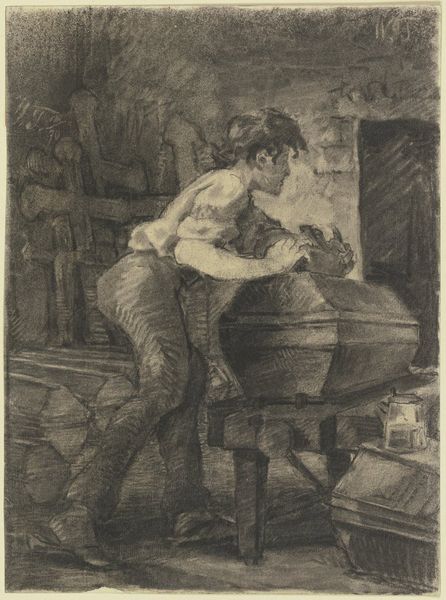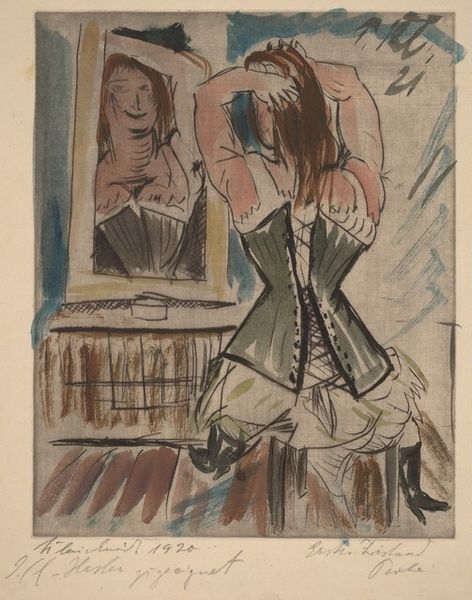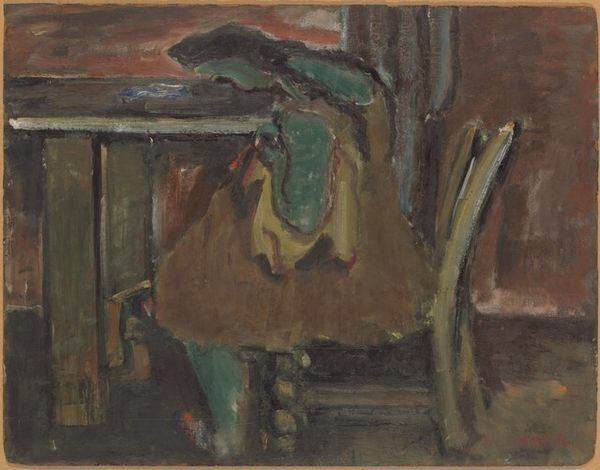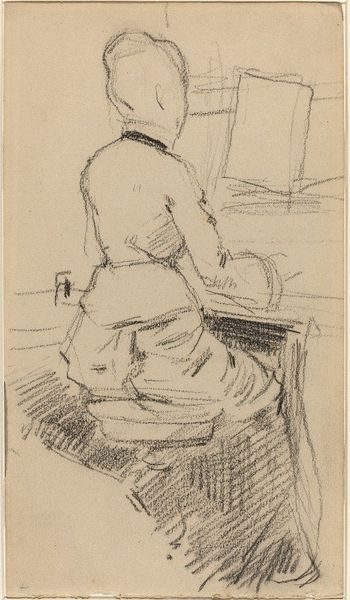
drawing, painting, watercolor
#
portrait
#
drawing
#
painting
#
figuration
#
oil painting
#
watercolor
#
watercolour illustration
#
genre-painting
Dimensions: overall: 30.3 x 22.8 cm (11 15/16 x 9 in.)
Copyright: National Gallery of Art: CC0 1.0
Curator: Here we have Mark Rothko's "Woman Standing Near a Table," executed in oil and watercolor. What strikes you first about this composition? Editor: The earthy palette—ochres, browns, muted greens—creates a quiet, almost melancholic mood. The gestural brushstrokes add to the sense of transience. Is she captured in a moment of introspection? Curator: Precisely. Rothko's brushwork, while seemingly simple, constructs a carefully balanced relationship between the figure and the setting. Observe the structural geometry contrasting with organic shapes: the rectangular table, for example, set against the flowing lines of her dress. Editor: That table—it almost disappears into the background, becoming a stage for this domestic drama. What is the significance of the objects resting on the table? They appear almost alchemical with the orb shape. Curator: Indeed. Consider genre paintings of the 1930s and 40s and earlier, how the domestic sphere and especially the objects within came to represent stability amid changing global paradigms. How does she seem poised in between the solid architectural line to the left and the loose flourish of floral pattern in the drape to the right. Editor: I think I perceive tension. Her bowed head and the indistinct facial features suggest introspection or fatigue, the burden of responsibility perhaps. The flowing strokes that form her clothes add a psychological nuance, representing burdens perhaps. It speaks to the enduring struggle of working. Curator: I agree, and would add that while Rothko moved toward complete abstraction later in his career, we can see hints here of his focus on conveying profound emotional states through colour and form—the arrangement of her body conveys its own feelings and thoughts. The composition here serves to evoke the inner experience of a female figure in a way earlier, more formal approaches would've been unable to achieve. Editor: This discussion has transformed how I view it. The visible brushstrokes become emotional pathways rather than simple painterly marks, imbuing the image with greater symbolism of emotional turbulence and quotidian worries. Curator: Absolutely. A closer inspection reveals just how charged each compositional element can be within this seemingly humble scene.
Comments
No comments
Be the first to comment and join the conversation on the ultimate creative platform.
